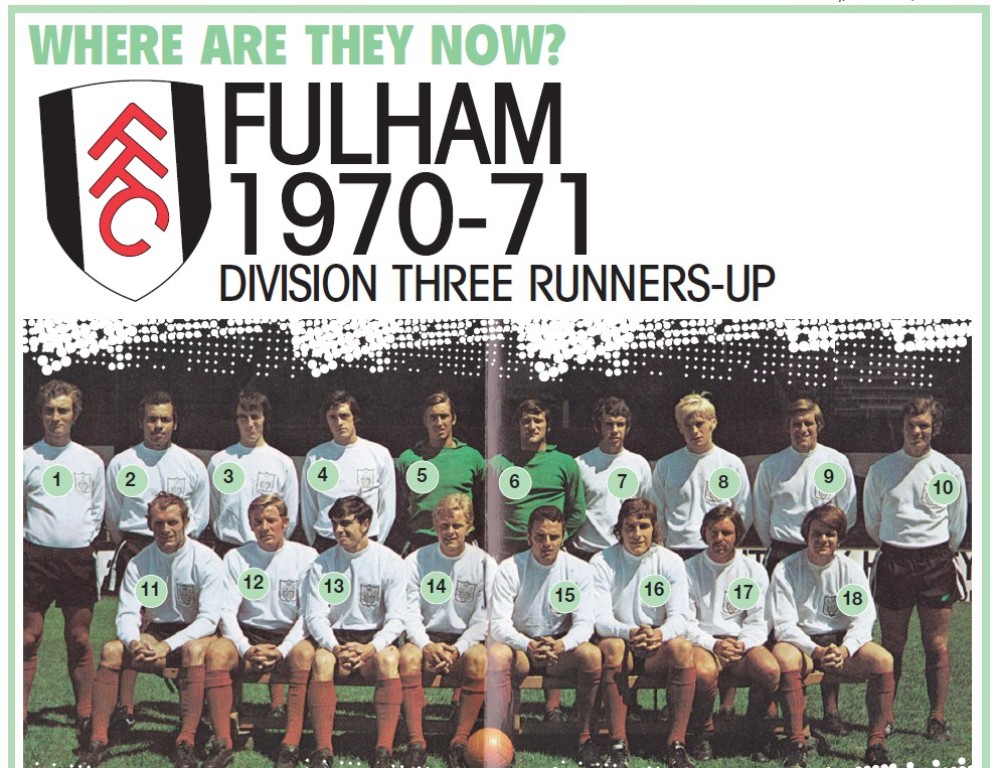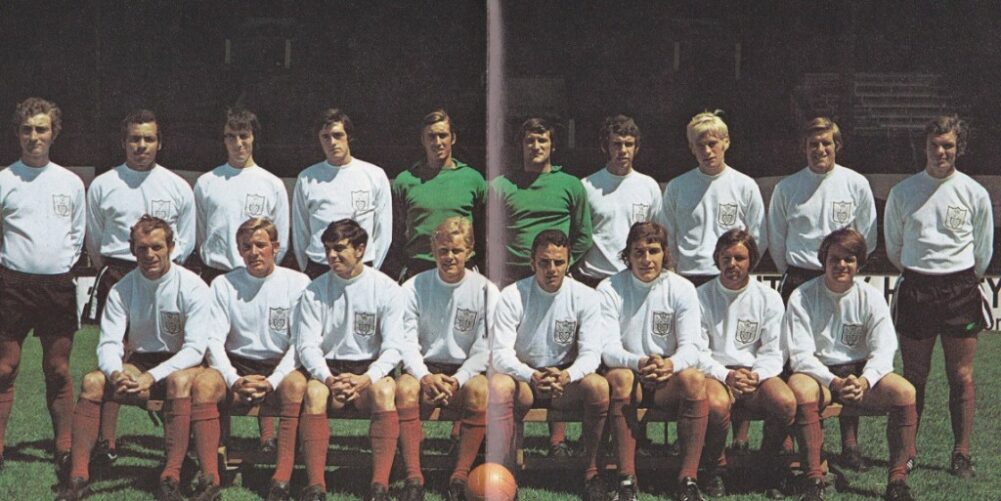By Neil Fissler
FULHAM had been a team in freefall, dropping like a stone through the Football League, when Barry Lloyd made the switch down the road from Chelsea.
After successive relegations in 1968 and 1969, Fulham found themselves playing in Division Three for the first time since 1931-32.
They finished fourth in their first season in the third tier and then runners-up, a point behind champions Preston, at the end of the second.
Lloyd, only just out of his teens, was made captain by Bill Dodgin in succession to the legendary Johnny Haynes and played a big part in the club bouncing back.
“It was good to get the club moving in the right direction again,” he said. “There were big changes in the structure of the club at the time.
“We certainly started to enjoy our football again. We felt we were good enough to win a game and that’s how we bounced back.
“It took us a bit of time. Coming down from where we were was difficult for the supporters to take, which you can understand.
“Even though the club had been in the First Division for many, many years, they were always struggling. It happens quite a bit that after a club is relegated, they cannot recover and go down a second time. Many clubs have done it.”.
Lloyd played all 46 games, along with Les Barrett, the 15-goal leading scorer. They were the only two ever presents in the side.
Fulham appeared to be cruising to the title but won only two of their last five games.
Crucially, their last game of the season was against Preston at Craven Cottage.
Lloyd, who had scored one of the goals at Bradford to earn promotion, watched on as Preston’s Ricky Heppolette scored the only goal in front of almost 26,000.
Alan Ball’s side took the title after hammering Rotherham United 3-0 three days later in their final game of the campaign.
“We should have won the title. We were in and around the top couple of places for nearly the whole of the season,” insisted Lloyd.
“But then we lost it on one game. That was such a disappointing day for us.
“Everything was set up for a bit of a celebration.
“If we won the game we went up as champions, so it was a bit of a dull evening. We had everything planned.
“It was one of those games where we couldn’t get going and Preston scored the only goal to beat us.
“We had achieved what we set out to do. It would have been nice to go up as champions but the main thing is the club recovered,” he added.

- David Robertson: A central defender who went back to his home town of Aberdeen after failing to make a first-team appearance
- Stan Horne: A midfielder who was Fulham’s first black player. He was forced to quit the game through high blood pressure and ran a building company until retirement.
- Jimmy Dunne: The midfielder became a maintenance man for the Churchill Hotel in Torquay but later went to live in Perth, Australia.
- John Richardson: A defender who played under his uncle, Billy Gray, at Brentford and Millwall. He later worked in insurance and for a funeral director until retiring.
- Ian Seymour: A goalkeeper who returned to live in his home town of Tunbridge Wells in Kent and worked as a roofer.
- Malcolm Webster: The goalkeeper went into coaching before becoming a partner in a football academy. He is now Ipswich Town’s goalkeeping coach.
- David Moreline: A defender who returned to live in his native Rainham, Essex, where he has worked as a postman.
- Dave Roberts: A Welsh international defender who worked as an advertising representative for a newspaper in South Wales.
- Fred Callaghan: A defender who managed Brentford, drove a London cab and has worked as a hospitality host at Craven Cottage.
- Wilf Tranter: A midfielder who was assistant manager of Swindon Town. He settled in the town and had business interests in property development and care homes.
- Reg Mathewson: A defender who went to work for a chemical fertiliser company in Ellesmere Port until retirement. His nephew, Trevor, played for Birmingham City.
- Mike Pentecost: The right-back became a taxi driver but died in Durban, South Africa, in May 2011.
- Jimmy Conway: The Republic of Ireland midfielder settled in the USA, where he held a number of coaching posts in the amateur, youth and professional game.
- Barry Lloyd: A midfielder who managed Yeovil and Worthing before taking charge of Brighton & Hove Albion. He worked in a BMW dealership and then returned to Brighton as a scout.
- Steve Earle: A midfielder who settled in Tulsa in the United States, where he has coached youth football and worked as an insurance salesman.
- Vic Halom: The striker managed Rochdale and worked in public relations for a plumbing company, before moving on to a utilities firm. He later built houses in Bulgaria.
- Les Barrett: A winger who spent 11 years working for BT and then another 11 helping his wife run a garden centre in Wandsworth until retiring.
- Stan Brown: A wing-half and one of three football-playing brothers who ran soccer schools in his home town of Lewes in Sussex.
Not pictured:
- George Johnston: A forward who settled in Cardiff, where he worked for a marine engineering company.
- Roger Davidson: An England schoolboy midfielder who became a black-cab driver in London.
- Allan Mansley: A winger who also became a taxi driver and lived in Liverpool until his death from a heart attack in February 2001, aged 54.
- Alan Morton: A forward who spent more than 40 years as greenkeeper at West Byfleet Golf Club in Surrey.
*This article was originally featured in The FLP on Sunday 30th October.
















